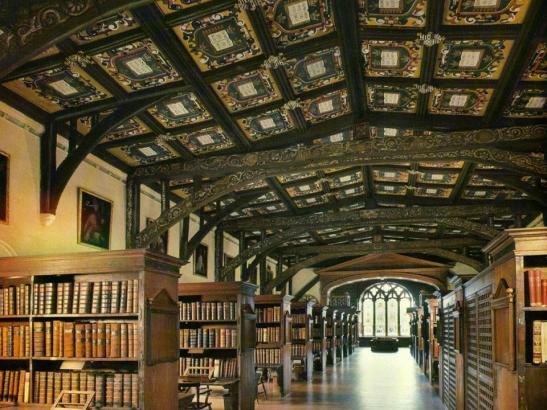Written by Natalya Din-Kariuki
Matilda would toddle down to the library. The walk took only ten minutes and this allowed her two glorious hours sitting quietly by herself in a cosy corner devouring one book after another.
The books transported her to new worlds and introduced her to amazing people who lived exciting lives.
Roald Dahl, Matilda
It seems so easy now to destroy libraries – mainly by taking away all of the books – and to say that books and libraries are not relevant to people’s lives. There’s a lot of talk about social breakdown and alienation, but how can it be otherwise when our ideas of progress remove the centres that did so much to keep people together?
I began to realise that I had company. Writers are often exiles, outsiders, runaways and castaways. These writers were my friends. Every book was a message in a bottle. Open it.
Jeanette Winterson, Why Be Happy When You Could Be Normal?
Both Roald Dahl’s novel and Jeanette Winterson’s memoir present the reader with protagonists hesitating on the threshold of a library. Dahl’s Matilda is a fictional character and Winterson’s “I” is a form of memory work, a fictionalization – I use the word fiction in its truest sense, from fingere, to shape or mould – of herself. However, the two young women bear several striking resemblances to each other, which, I believe, have the potential to better inform our understanding of the importance of the public library as a social and cultural institution. Both texts draw upon the Bildung form, identifying the library as the crucial locus of the protagonists’ coming of age. Both characters inhabit liminal spaces in their families and communities; significantly, both suffer the pains of abusive and neglectful parents. The threshold or margin is, paradoxically, the site of their eventual empowerment: by stepping through the door and into the library, each character gains access to previously unimagined worlds, to “friends” and “exciting lives”. However, both Dahl and Winterson use the library not simply as a vehicle for the development of individual subjectivities; its significance reaches out beyond the lives of the protagonists and interweaves with the collective destinies of their communities. The young connect with the old, the provincial (Matilda goes to the “village library”) with the global. The library as geographical space does not deny or elide questions of difference – Winterson’s library accommodates differences of age, gender, class, sexuality and nation – but, on the contrary, celebrates diversity. For Winterson, the Accrington Public Library in the 1960s and the telling of stories that it engendered, both through print and through oral culture, was at the heart of the life of the Greater Manchester working class community. Books were handled, in this context, not simply as a commodity, but as a means to community forming; reading literature is not the sole preserve of the elite, but a democratic space in which all are welcome. For all its silence, fines and regulations, the library, in its own way, becomes a Bakhtin-esque carnival, which enables (and, indeed, requires) polyphony.
I cannot help but go back to Dahl’s Matilda and Jeanette Winterson’s memoirs when reading about the current “laptops for all” developments in Kenya, particularly as so few (read: none) of the current conversations on the education budget have mentioned the funding of public libraries. It seems naïve to unequivocally equate technology and the digital with “progress” – apparently our government is “digital” but I’ve yet to understand what exactly this translates to. Each age and each culture inevitably thinks itself superior to those anterior and adjacent to it. In its own important ways, of course, the Internet and other forms of technology have provided new, exciting spaces for dialogue, publishing and learning (I write this now on a laptop with the intention of publishing it on a blog and it is fantastic that I am able to do so). This is not an either/or question, not a simple opposition of “laptops” versus “books”. I do think, however, that dangers lie in privileging certain forms of education over others at the expense of cultural institutions including public libraries and theatres. Throughout literary history, communities have found ways for people to bond with each other through books, making literature accessible to huge bodies of people in innovative ways – the public theatres of the early modern period and the travelling libraries and the serial publication of novels in newspaper periodicals of the nineteenth century, to name but a few examples.
Libraries, then, have the potential to provide both figurative and actual “company”, as in the Winterson quote above. I italicized bodies earlier to highlight its double meaning, both that of an organized gathering of people and of a physical crowd of human bodies. Books, after all, are an extension of our bodies. Finding physical intimacy with a book is something that no technology can replace or replicate: sneezing at the dust lifted from turned pages, running a finger along lines of tiny print, handling a weighty hardback tome in both hands, sitting in companionable silence with another reader, all are visceral experiences which every person has the right to enjoy. It is often said that Kenya does not have a “reading culture” and/or that Kenyans do not like to read. That seems, implicitly, an insult to everyone’s intelligence. It is simply a lazy excuse to not protect and develop our public library resources. More people would read more regularly if there were safe, comfortable and well-stocked libraries in which to do so, with reading groups and social events in place to supplement the libraries’ main activities. Every little girl in every village in Kenya – like Dahl’s Matilda, a four-year old prodigy – should be able to toddle down to her local library and blissfully read on for as long as she desires, meeting new friends and seeing new worlds along the way.



